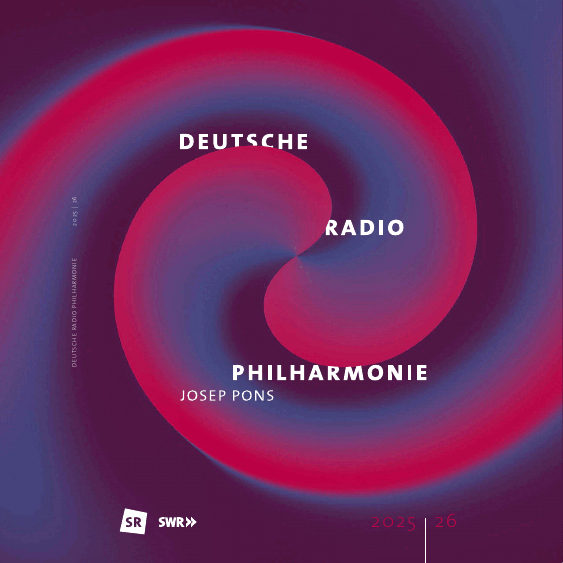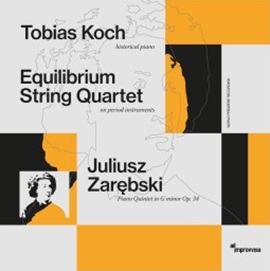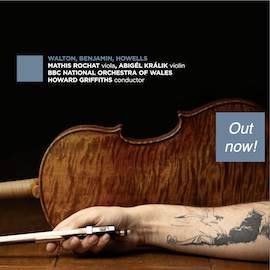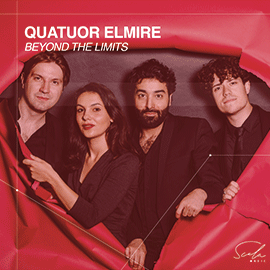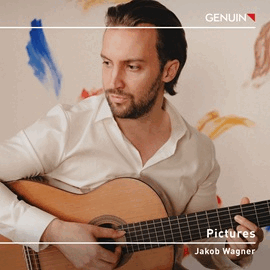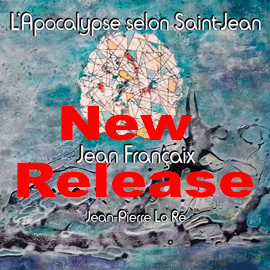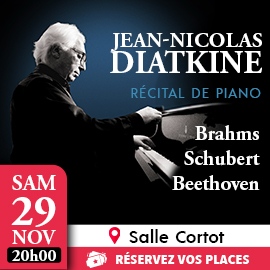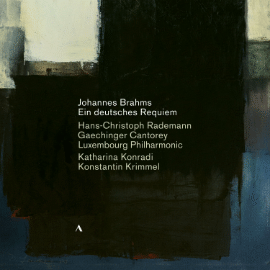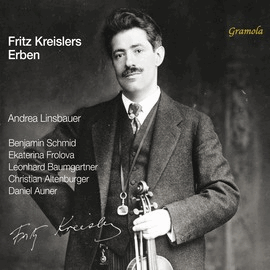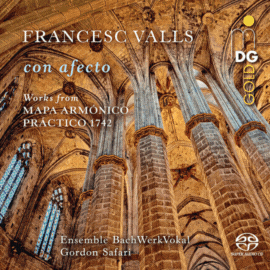Andris, you were born in Riga in 1978. In the mid-1990s, you studied composition with your country’s most famous composer, Pēteris Vasks, who is also known as ‘The voice of Latvia’. To what extent do you feel connected to your country’s musical tradition, and what does it mean to you to be a Latvian composer?
Of course, I am grateful to my country for educating me as a musician and as a person during my early years. Latvia is also very close to my heart as a geographically beautiful and diverse place. Yes, perhaps we don’t have snow-capped mountains, impressive waterfalls or blue sea lagoons, but I am very fond of the smell of Latvian pine and spruce forests, the harsh diversity and vastness of the Baltic Sea coast. Do I see myself as a continuation of Latvian musical culture? It’s hard for me to give a clear answer to that. Yes and no. In fact, I am definitely a ‘product’ of the local musical school, but do I feel only the patriotic musical tradition that can be observed in our song festivals? Probably only partially. I see national identity in much broader, genetic, even metaphysical terms, but I see myself in a much broader global context.
In the 1990s, when our generation entered the Latvian music scene, we wanted to break down the old, lingering romantic world and offer alternatives – Latvian music had never had a distinct, continuous avant-garde and modernist direction. Does such a ‘demolition’ mean that I am not a patriot of my country’s culture? I hope not. At the same time, I see that what I do differs significantly from what is or is not currently relevant in contemporary Western European music. However, I am happy to be living in a time when music no longer has such ‘leading,’ ‘current,’ or ‘correct’ traditions, but can be a combination of various elements. In my opinion, my music is also formed in a certain post-Romantic tradition with a fairly contemporary perception of time and the world.
I am very interested in the psychology of sound, psychoanalysis, the influence of sound on human perception, and I try to ensure that my music does not contradict the ability of humans as intellectual beings to ‘process’ and absorb music without entering a zone of physical disharmony. In the past, I have often crossed this line, and now I often think about what kind of world I would like to live in, if it were a real world in which to live, not just a place to visit from time to time to ‘get some fresh air.’
 When the Iron Curtain fell and the Singing Revolution brought independence to the Baltic countries, you were still a child. What memories do you have of that time and how did it shape you as a composer?
When the Iron Curtain fell and the Singing Revolution brought independence to the Baltic countries, you were still a child. What memories do you have of that time and how did it shape you as a composer?
Actually, I remember the Soviet years quite well, because I studied at one of the model schools in the centre of Riga, where strict behavioural discipline was required. I doubt I would ever want to return to that. At the same time, yes, I think that there were and still are many very good traditions and opportunities in so-called post-Soviet music education. For example, the large number of individual lessons (including in composition), which is very important for developing different aspects of personality. This is especially important for more introverted people, among whom I count myself.
Since I work as a teacher myself, I see that it is increasingly difficult for sensitive personalities to prove themselves and express themselves at a time when you have to fight tooth and nail to be noticed at all. The world tries to turn introverts into extroverts, threatening to drop you out of the loop if you don’t know how to present yourself properly. There is a lot of music out there, almost every other musician is technically very skilled, has received awards and commissions, but how much of this music has a distinct individual character, something lasting, something unique to a particular composer? Education at that time had another side to it – sometimes it was upbringing through belittlement, but that is no longer possible today. And that’s a good thing. From my education at that time, I absorbed the traditions of classical music.
When the 1990s and Latvia’s independence arrived, I, along with a couple of colleagues, were the first to try to angrily follow the avant-garde path, change the system, laugh at outdated things, initiate new traditions, and leave Latvia to study abroad.
My personality has been shaped not only by Latvia, but also by a year at the Vienna University of Music and Performing Arts, followed by four years at the Lithuanian Academy of music and theatre in Vilnius, which gave me a great deal. I feel very close to Lithuania’s boldly experimental, yet at the same time very lively and emotional music world. Also good, or even better: the mentality there.
You have composed works for almost all genres and styles. In Germany, you are best known as a composer of choral music. Are your choral works a tribute to the great singing tradition of Latvia (and the Baltic States), so to speak, and how do you continue this tradition with your compositional means?
Incidentally, I would like to disagree with this statement – I never thought that my orchestral works would be performed so much outside Latvia, especially in Germany, which I have always considered to be either a very conservative classical tradition or a bastion of radical avant-garde. And it is precisely my orchestral works that have been performed most regularly there. I have collaborated with the Berlin Radio Symphony Orchestra, my music has been included several times in the repertoire of the Saarbrücken-Kaiserslautern Southwest German Symphony Orchestra, and finally, my work was commissioned and performed by the Leipzig Gewandhaus Symphony Orchestra.
I am delighted to be collaborating with Ensemble Modern. And that’s just in Germany. I have collaborated with the Amsterdam Radio, Belgian National, and Wrocław Philharmonic Orchestras, as well as several orchestras in Spain and America, including the Boston Symphony Orchestra.
In the field of choral music, as far as I know, my music has been sung by the SWR Vokalensemble. In the context of my choral music, I would draw a certain line only a couple of years back. For almost twenty years, I have been involved in collaboration with the Latvian Radio Choir – we have collaborated on many of my works, including the chamber opera Tavas klusēšanas grāmata (Books of silence), and this choir has promoted my works around the world as much as possible. However, a few years ago, I realized that I had an inner desire for my works to be accessible to other choirs, including amateur choirs, which form Latvia’s great singing tradition. So, I started writing much easier and, perhaps, more ‘democratic’ works in terms of musical language. For example, Lūgšana (Prayer), which is available on the highly acclaimed Latvian Radio Choir CD released by Skani, and others, which now, in the short time since they were written, are sung not only by amateur choirs, but even by professional choirs, and not only in Latvia. I will be honest in saying that I also listen to these works more often myself, finding in them not only intellectual but also psycho-emotional balance and peace for myself. I really need them at this time, when the world is unusually turbulent and evil is closer to Europe than ever before.
Many of your works have ‘speaking’ titles. How programmatic is your music and how (and where) do you draw your inspiration for it? What do other arts (e.g. painting, films, books…) and nature (of your homeland) mean to you in this context?
I would rather say that the titles of my works are ‘symbolic.’ They do not describe anything, they are not programmatic or specific, but rather convey a certain emotional temperature, a direction of association. With very few exceptions, there is nothing specific to be seen in the works, no matter how much some people might want to find something there. I would invite you to treat the titles of my works as signposts in the fog before meditation – relax and follow the images and colours that arise in your imagination. If something else appears there, something I may have intended – let it be, I will be happy if your feelings are distinctive and completely different.
I also treat the process of composition as an exciting journey – I always see roughly where it starts and where I want to end up, but how this journey unfolds is also an adventure for me. Perhaps some would consider this unprofessional, but if I knew everything about my work in advance, the process of composing would no longer be interesting to me and, at least for me, would not be very different from craftsmanship. I rely very, very much on my intuition, working with signals sent by my subconscious. Lately, I have been trying to verbalize this method in some way, to rationalize it as a pedagogical method, but for now I am only on the way to doing so. I have found very little information about what is called ‘automatic writing’ in music. In literature, yes, but not in music.
Let’s talk about your new album, which has now been released on the Latvian label Skani and features your first two symphonies and the work ‘The Lonely Pine Tree – (Falsification & Epitaph)’. The first symphony is called ‘Love is stronger’. What does the title mean and what is the work about?
It seems that the topic of the first symphony is and will be eternal. This is especially true in the 21st century, when the abundance of information and the inability to sort it out are turning the world into a meaningless marketplace where pleasure is indistinguishable from the proximity of death, artistic snobbery from the hunger of the homeless, and war from the blood-soaked champagne in the foyer of an opera house. When this work was created, I drew attention to how news items are often arranged in a nonsensical order on news portals, where a report about rockets fired by one country at another and the resulting casualties is followed by sensationalist information about an influencer’s new hair color, right next to it – hopeful economic forecasts and news about the rise in domestic violence. And then you realize – no matter how hard we try to see love in our surroundings, and the church has been preaching it for thousands of years, love is receding from the world, and the only safe place to find it is still within ourselves, in our own little microcosm, our family. To my eyes today, this is a very harsh, despairing work, which also encodes the SOS signal in Morse code. Love in this case is when silence sets in. My work is a commentary on a world where love comes when this world falls silent. Similarly, I once wrote in my first string quartet, Trataka. Point noir, which tells of specific meditation processes. Anyone who has begun the practice of meditation has noticed how chaotically thoughts perform pirouettes and paradoxical turns in the brain, precisely when we want to achieve peace. At the end of the string quartet, the musicians freeze for half a minute with their bows raised in the air. This is the moment when truth is finally achieved.
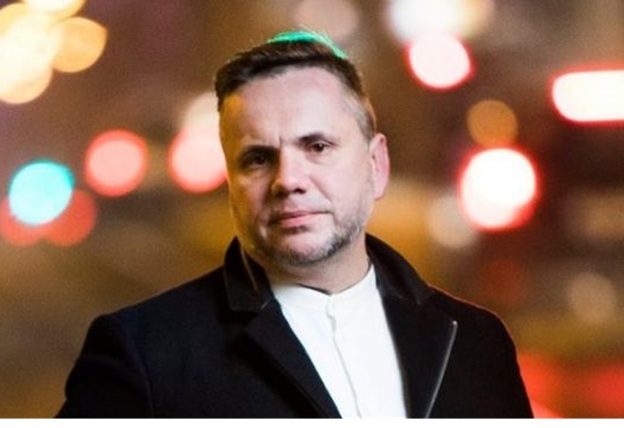
Andris Dzenītis
(c) PR
The second symphony also has a title: ‘Warm Wind’. What story does this symphony tell us?
I wrote the symphony at a time when my partner and I were walking long distances along the Latvian coast during COVID, and we have walked most of its several hundred kilometres. It was a particularly therapeutic experience. My meditation was a striving for distance, the ability to feel the changing relief of the country’s beach under my feet, as if to capture every turn, bend, and colour change in a memory tape, connecting it in a kind of memory map. My symphony is like a memory map of this journey along this elemental force of nature. Is the sea depicted here? Perhaps not directly. It is somewhere nearby. It is more of a reflection on the journey. On a cool evening, walking along the dunes, I felt a warm breeze. It seemed like a living being, a living, enveloping spirit outside of reality. I gave the symphony a second name, ‘Warm Wind.’ This work is about the increasingly necessary movement toward harmony. Both a transition to my oasis of sound – Symphony No. 3, Arcadia – and an intermediate state full of chiaroscuro, colour, and peace.
Please correct me if I’m wrong, but to my ears, both symphonies (and also Pine Tree) sound very Baltic. Is that a coincidence or intentional? What is the secret of your skill in instrumentation? In terms of orchestration, all three works are extremely sophisticated, sometimes even magically orchestrated. Is the orchestral sound a quality of its own, or rather, an independent quality for you?
The world of orchestration is where I truly feel most at ease and comfortable, where I am still experimenting and searching. Nevertheless, I know that I will always find an interesting solution, a way out of seemingly complex situations. When writing for orchestra, I am fascinated by the development of material in timbral progression – I have never created musical material to be orchestrated later – I always write everything directly into the score, because often in my intuitive approach to the development of musical material, the further possible events are predicted precisely by the emergence of a certain timbre in the foreground. It is difficult for me to say anything specific about the ‘Baltic sound,’ but throughout my conscious life as a composer, I have been a great admirer of Nordic symphonic music, and to this day, the composers whose orchestral sound is closest to my own understanding are, for example, Magnus Lindberg, Sebastian Fagerlund, Anders Hillborg, or, for example, my Estonian colleague Erkki-Sven Tüür. I associate myself less with the orchestral sound culture of most Central European composers.
At the same time, in terms of sound mass and form, I feel closest to the Ukrainian composer Valentin Silvestrov. Can you create an image of me from this combination? (laughs)
Yes, at the same time I search a lot myself, I could talk for hours about orchestration from my own experience. I would say that I am almost self-taught; I haven’t had any particularly strong teachers in orchestration – I have learned a great deal by listening and using my imagination. In this respect, I still belong to the generation that believes that a composer must have both a good theoretical and practical knowledge of instruments and their use.
The younger generation increasingly expects that sound banks, ‘red impossible notes’ in notation software, ready-made instrumentation recipe sets, or, at best, books or short online courses will provide a formula for success, and that there is not much else to know.
At times, I have begun to consider that my students should be prohibited from using computer software when writing instrumental music. By listening to and believing what they play, they significantly damage their imagination and are misled about the possibilities. I have created my inner world of sound by imagining it on a blank canvas of fantasy in complete silence, or just by touching a few notes on the piano.
In ‘The Lonely Pine Tree’, you reconstructed a fragmentary work by your compatriot Emīls Dārziņš (1875–1910), although ‘reconstruction’ is the wrong word for what you did. Please explain the background to Dārziņš’s ‘Pine Tree’ and what you did with the fragments.
Artists tend to be very emotional, but I have always viewed with pain situations where one of my colleagues deliberately destroys their work. In my opinion, success or failure – this understanding can change over the years, and society’s attitude can also change. Emīls Dārziņš was deeply distressed when a colleague – driven by revenge – accused one of his rare orchestral works, ‘The Lonely Pine’, of being a plagiarism of Sibelius’ ‘The Swan of Tuonela.’ Ironically, that same colleague had earlier conducted the piece with great enthusiasm, earning the audience’s admiration. Later, it was said that Sibelius himself confirmed the similarity after receiving the score. As a result, Dārziņš, devastated, consigned his ‘Pine’ to the flames of his furnace.
So it is mainly due to Sibelius that Darzin’s work has not been preserved in its entirety?
I am quite certain that Sibelius, who was at the height of his fame and suffering from addiction at the time, did not even look at this score. Researchers have not found it in Sibelius’s archive either, thinking that, as in Dārziņš’s case, Sibelius used it to warm his home by lighting the stove. My conviction that the similarity is unlikely is reinforced by the fact that four instrumental parts from the work have been preserved in two museums in Riga – two clarinet parts, an English horn part and a bassoon part. Neither the meter nor theoloistic character of the clarinet part suggests anything similar to the static and distant coolness of Sibelius’s ‘Swan’. I took a risk and decided to return at least part of Dārziņš’s work to him on his 150th birthday by falsifying the possible musical material – the trills of the woodwind instruments at the beginning of the part do not give the slightest idea of what could sound in conjunction with this general sound material. The clarinet solo episode is somewhat predictable, as the bassoon accompanies the solo clarinet. I could only fantasize about the rest from Emīls Dārziņš’s letters, his articles justifying plagiarism, and other sources. And yet, of course, this is and remains my fantasy of how it could have been. There was also an opportunity to play around with Dārziņš’s skill at instrumentation, the individual nuances of which we can only judge from his only surviving orchestral work, Melanholiskais valsis (Melancholic Waltz). To make this tribute a conversation with Dārziņš, I have ‘added’ my own material to about half of Dārziņš’s forged material, today’s wall – warm, but also tense, music, as if commenting on Emīls Dārziņš’ short, quickly flaring and tragically ended life. He died on the train tracks at the age of 35, leaving behind works that have become part of the golden fund of Latvian music. These are mainly solo and choral songs, as well as one symphonic work.
Your third symphony, entitled ‘Arcadia’, is currently only available on YouTube (recording of the world premiere on 25 March 2025). Could you please tell us a little about this work?
After listening to a recording of this symphony, Pēteris Vasks called me. I couldn’t pick up the phone, so he left a message on my answering machine in a concerned voice, saying that we should talk about it. I must admit, I was as scared as I was in school when I received criticism from my teacher Vasks. However, what Pēteris said to me about this work, that in his opinion there was too much light in it – coming from Vasks, whose music is always full of light – I truly took as a compliment. The Third Symphony, Arcadia, is the most utopian and idealistic of my three symphonies. Again, although I never propose a specific programmatic line, in my inner feeling it tells of an imaginary ideal world where there is no dualism or negativity. It is a world where Debussy’s Faun or painted characters of Čiurlionis might dwell. My symphony has both monumental entrance gates and incredibly fast-blooming flowers that envelop everything around them. Here there is open and ideal, unpunished eroticism, here there are birdsong that brings the listener back to reality at the end of the symphony.
How does this ‘composed reality’ sound at the end of Arcadia? What is different from the beginning of the symphony?
Similarly to my Fourth String Quartet, Within.Elysium.Without, commissioned by the French Ensemble Quatuor Akilone, I am preoccupied with the energy of themes that explore the relationship between the natural image as perceived, described, and imbued with meaning by humans, and nature as it exists impartially – independent of human presence and notions of beauty or ugliness – existing simply in and of itself. That is why, at the end of the symphony, the harmoniously beautiful, modal, even tonally constructed world of sound in my imagination unexpectedly shatters into noises, sounds that are beyond the meanings assigned to them by humans. In the forest or meadow, during the thawing of the ice in the river, there are so many small noises to which we assign no meaning, no tonality, no symbolism. The cuckoo does not sing in thirds, just as autumn does not mean a ninth chord or polytonal chord in the low sound of the French horns. I myself love this work very much. It was premiered this spring by the Sinfonietta Riga orchestra, conducted by Normunds Šnē, my most trusted friend in music. I hope that this symphony will also be recorded one day and performed by more orchestras.
Last question: What are your plans for the future? Can we look forward to more symphonies from you – and are there plans for more (Skani) albums with your music?
The symphony orchestra is my element, and if there are opportunities and offers, I will never refuse to write new works for orchestra, orchestra with soloists, and also symphonies. Chief conductor of Liepāja Symphony Orchestra Guntis Kuzma and I have already discussed that if I were to compose a fourth symphony in a couple of years, it could be paired in an album with the third, Arcadia, which has not yet been recorded. But I want to write more… I have just finished a concerto for percussion instruments and orchestra, which, incidentally, will be premiered by the Liepāja Symphony Orchestra at their season finale concert, together with the fantastic percussionist Guntars Freibergs. This will be an unusual work in terms of instrumentation, in which I capture my interest in the Southeast Asian Gamelan tradition not only on a fantasy level, but in a very real way, using specific traditions and their characteristic structures. I have a new work for symphonic wind orchestra on the table, as well as various smaller works for choirs, chamber ensembles, and electronic music. I am always happy when my music is played, when it is needed, when new ensembles and musicians are interested in it. It gives me joy to write and a sense of purpose. I am open to collaboration.



